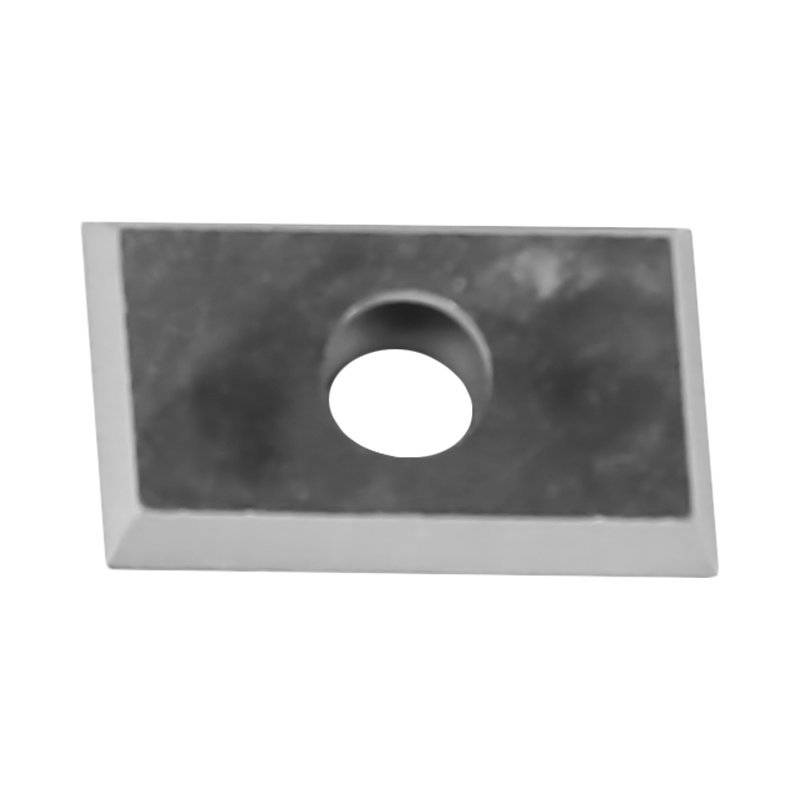2025-10-24
Across different stages of machining, operators often compare the functions of an Indexable Insert and a Carbide Welding Blade to decide which tool fits specific production needs. The decision directly affects efficiency, maintenance time, and overall cost. Tools such as the Generic Triangle Shape Carbide Cutter Insert Shim show how insert-based solutions can meet diverse requirements in turning, milling, threading, and grooving, while welded blades continue to play an important role in certain heavy-duty operations.

An indexable insert is designed with multiple cutting edges, which allows quick edge rotation when one becomes worn. This feature makes it well suited for production lines that switch between different machining tasks. In workshops where operations range from roughing to finishing, the insert provides flexibility without needing a completely new tool. A carbide welding blade, by contrast, is fixed and requires regrinding or replacement once the edge deteriorates. This difference makes inserts particularly practical in environments where a single production line handles varied tasks and materials.
When assessing tool choice, it is important to look beyond the initial purchase price.On the other hand, carbide welding blades concentrate all cutting on one edge. Once worn, the blade must be repaired or replaced, often requiring more time and resources. For high-volume production, this extended downtime can have a direct impact on delivery schedules, making inserts more cost-effective for continuous operations.
Different materials demand different cutting solutions. Indexable inserts, including the triangle-shaped carbide cutter shim, can be produced with a variety of geometries and grades, making them suitable for machining steel, cast iron, and non-ferrous metals. This range of options enables operators to select the right insert for both finishing precision and roughing durability. A carbide welding blade, however, is less adaptable once manufactured. It finds stronger application in operations that prioritize edge toughness, such as heavy interrupted cuts on castings or components subject to vibration during machining.
For industries requiring consistent dimensional accuracy, indexable inserts offer significant advantages. Because the tool holder remains fixed, only the cutting edge is changed, ensuring that the setup does not shift during replacement. This stability helps maintain uniform tolerances across large production runs. In contrast, welding blades often require tool readjustments after repair or replacement, which introduces variability into the machining process. Where repeatability is a key factor, inserts are often the preferred option.
Both inserts and welding blades share the inherent properties of carbide—hardness, heat resistance, and wear resistance. The difference lies in how each tool manages wear. Inserts spread usage across multiple edges, distributing wear and extending tool life. Welding blades focus all cutting force on one edge, which may wear faster under continuous load but can handle impact better in rough conditions. Production lines that encounter shock loads or irregular surfaces often favor welding blades for their rigidity, while inserts serve better in stable and repeatable cutting environments.
Every production line balances productivity goals with flexibility demands. For facilities machining a wide variety of materials and components, indexable inserts reduce tool inventory requirements and simplify scheduling. Operators can keep fewer tool types in stock while still covering multiple applications. Conversely, carbide welding blades may be more suitable in dedicated production lines where a single component type is machined continuously, and where the toughness of a welded edge supports the process better than versatility.
The Generic Triangle Shape Carbide Cutter Insert Shim illustrates how inserts can integrate seamlessly into different operations. Its design supports milling, threading, and grooving tasks, making it a tool that adapts well in multi-purpose production setups. When applied correctly, it not only maintains cutting quality but also helps reduce downtime between tool changes. In many cases, it allows operators to maintain steady output without frequent interruptions, which is essential for efficient workflows.
Choosing between an indexable insert and a carbide welding blade depends on production goals, material types, and machining conditions. Inserts serve well in workshops that prioritize adaptability and reduced downtime, while welding blades continue to provide value in heavy-duty operations where toughness against impact is essential. By understanding how each option applies in practice, operators can match the right tool to the right task, ensuring the production line maintains both stability and efficiency.